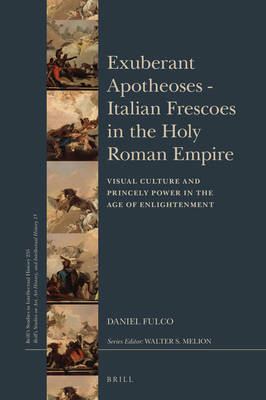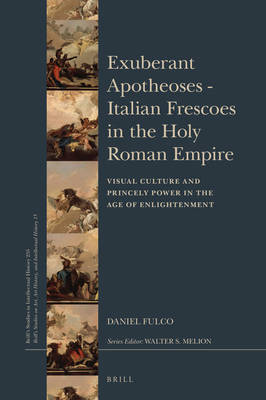
- Afhalen na 1 uur in een winkel met voorraad
- Gratis thuislevering in België vanaf € 30
- Ruim aanbod met 7 miljoen producten
- Afhalen na 1 uur in een winkel met voorraad
- Gratis thuislevering in België vanaf € 30
- Ruim aanbod met 7 miljoen producten
Zoeken
Exuberant Apotheoses: Italian Frescoes in the Holy Roman Empire
Visual Culture and Princely Power in the Age of Enlightenment
Daniel Fulco
€ 375,45
+ 750 punten
Omschrijving
From the late seventeenth through the mid-eighteenth centuries, large-scale Italian frescoes soared in popularity as nobles in the German principalities of the Holy Roman Empire constructed new palaces at an unprecedented rate. They competed with one another to produce lavish decorative schemes that expressed their claim to princely power and political authority. Whereas previous art historians have primarily focused on iconographic and stylistic issues and generally treated these programs as individual commissions of regional courts, this book places the works of art within their broad cultural and historical contexts during the Enlightenment. This monograph explains how rulers gradually shifted from emphasizing military heroism to stressing their cultivation of the arts and sciences, and addresses how expressing membership in a specifically European civilization emerged as an integral visual theme and a key ambition of the German nobility.
Specificaties
Betrokkenen
- Auteur(s):
- Uitgeverij:
Inhoud
- Aantal bladzijden:
- 628
- Taal:
- Engels
- Reeks:
- Reeksnummer:
- nr. 255
Eigenschappen
- Productcode (EAN):
- 9789004308046
- Verschijningsdatum:
- 31/03/2016
- Uitvoering:
- Hardcover
- Formaat:
- Genaaid
- Afmetingen:
- 155 mm x 235 mm
- Gewicht:
- 1098 g

Alleen bij Standaard Boekhandel
+ 750 punten op je klantenkaart van Standaard Boekhandel
Beoordelingen
We publiceren alleen reviews die voldoen aan de voorwaarden voor reviews. Bekijk onze voorwaarden voor reviews.











